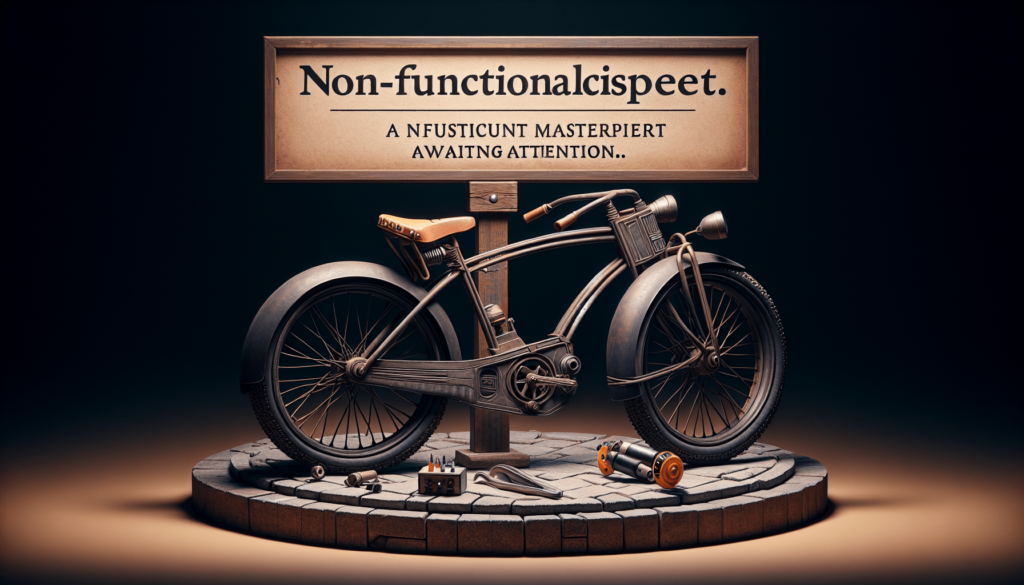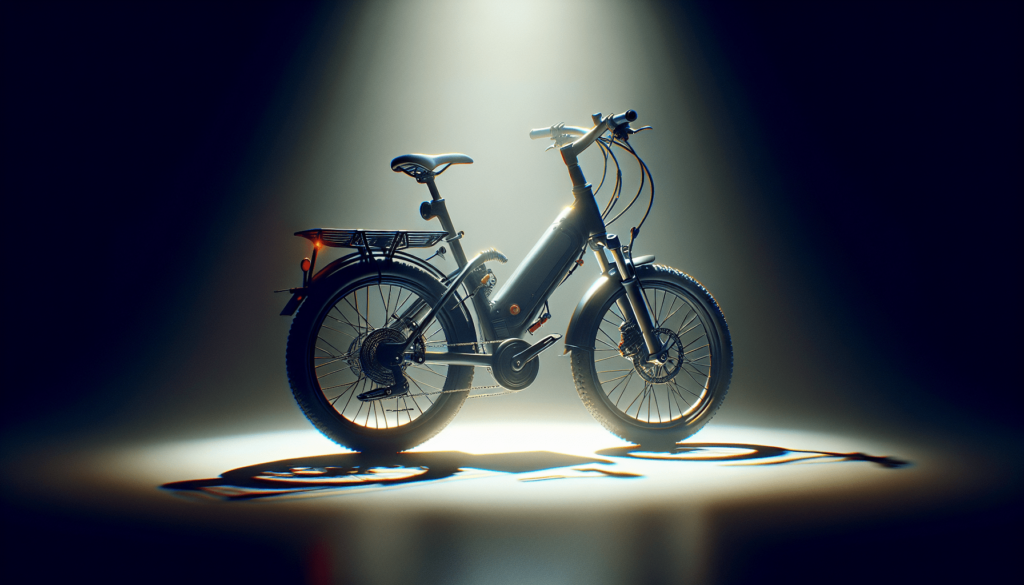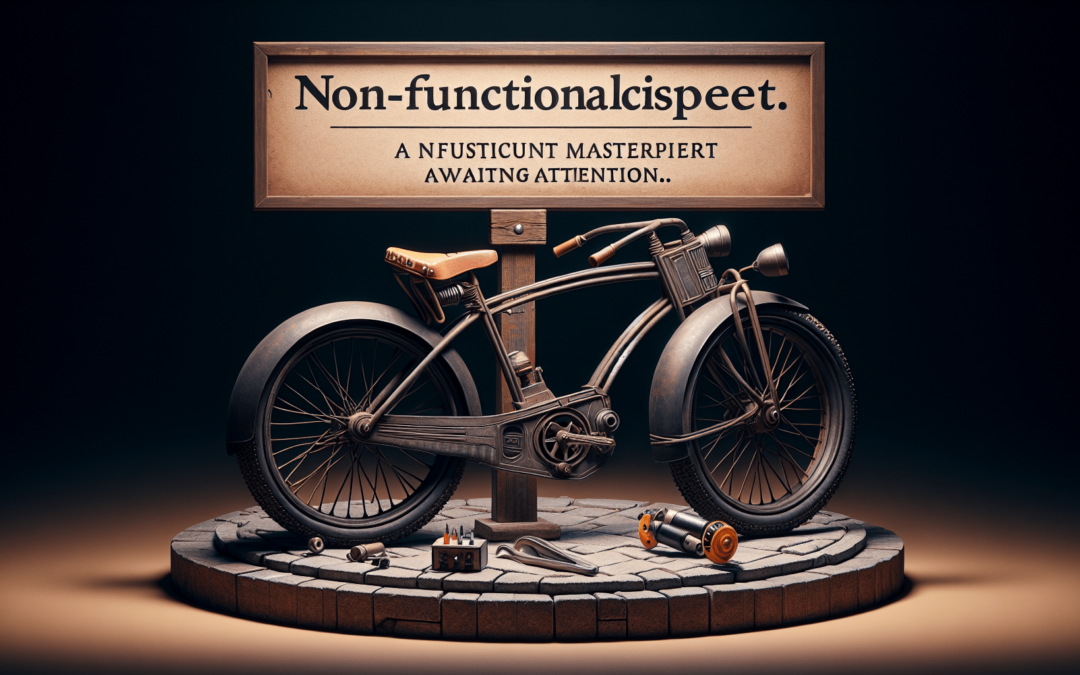Having trouble getting your Lectric Bike to turn on? Don’t worry, we’ve got you covered! In this article, we’ll explore the common issues that can cause your electric bike to refuse to power up. We’ll provide you with some simple troubleshooting steps to help get you back on the road in no time. So, if you’re tired of being stuck without your trusty two-wheeler, keep reading for some helpful tips and tricks!

Reasons Why an Electric Bike Won’t Turn On
Dead Battery
One possible reason why your electric bike won’t turn on is a dead battery. The battery supplies the power needed to run the bike, so if it is completely drained, it won’t be able to provide the necessary energy. To determine if this is the issue, you should check the battery charge level.
Loose Connections
Another potential reason for your electric bike not turning on is loose connections. Over time, the vibrations from riding can cause the connections between various components to become loose. When this happens, the electrical current may not flow properly, preventing the bike from turning on.
Faulty Power Switch
If your electric bike has a faulty power switch, it may not be able to turn on. The power switch is responsible for starting and stopping the electrical flow to the bike’s components. If it is malfunctioning, it won’t send the signal to turn on the bike.
Blown Fuse
A blown fuse could also be the culprit behind your electric bike’s failure to turn on. The fuse is designed to protect the electrical system from excessive current. If a power surge occurs or there is a short circuit, the fuse may blow, cutting off the power supply and rendering the bike unable to turn on.
Defective Motor
If the motor of your electric bike is defective, it may not be able to start, causing the bike to remain off. The motor is responsible for converting electrical energy into mechanical energy, propelling the bike forward. If the motor is faulty, it won’t be able to perform this function.
Faulty Controller
The controller is an essential component of an electric bike that controls and regulates the flow of electricity. If the controller is faulty, it may not send the necessary signals to the motor and other components, preventing the bike from turning on.
Damaged Wiring
Damaged wiring can lead to your electric bike failing to turn on. Over time, wires may become frayed or broken, disrupting the electrical flow. If there are damaged wires in the bike’s wiring harness, this can impede the proper functioning of the electrical system.
Faulty Charger
In some cases, the issue may lie with the charger rather than the bike itself. If the charger is faulty or damaged, it won’t be able to recharge the battery, leaving it completely drained. Without a properly charged battery, the bike won’t have the power it needs to turn on.
Overheating
Electric bikes generate heat during operation, and if they overheat, they may shut down as a safety measure. Overheating can occur due to a variety of reasons, such as riding for an extended period, using the bike in extreme weather conditions, or a malfunctioning cooling system. If the bike overheats, it may refuse to turn on until it has cooled down sufficiently.
Electrical System Failure
In some rare cases, a complete electrical system failure might be the cause of your electric bike not turning on. This can happen if multiple components of the electrical system fail simultaneously or if there is a major malfunction that disrupts the entire system.
Troubleshooting Tips for an Electric Bike That Won’t Turn On
Check the Battery
Start troubleshooting by checking the battery charge level. Use a battery tester or a multimeter to measure the voltage of the battery. If the voltage is extremely low or zero, it indicates a dead battery that needs to be either recharged or replaced.
Inspect and Secure Connections
Inspect all connections between components, such as the battery, motor, controller, and power switch. Tighten any loose connections and ensure they are snugly fitted. Check for any signs of corrosion or damage on the connectors, and if necessary, clean or replace them.
Test the Power Switch
To check if the power switch is faulty, inspect it visually for any obvious signs of damage. Press the switch and listen for a clicking sound, indicating that it is engaging properly. If there are no signs of damage and it clicks when pressed properly, the power switch is likely functioning correctly. Otherwise, consider replacing it with a new switch.
Check the Fuse
Locate the fuse in your electric bike’s electrical system. Use a multimeter or continuity tester to check if the fuse is blown. If there is no continuity or the multimeter reading shows infinite resistance, the fuse is blown and needs to be replaced with a new one of the correct rating.
Examine the Motor
Visually inspect the motor for any loose or disconnected wires. Check for any signs of damage or wear on the motor itself. Test the motor by connecting it directly to a power source, bypassing the controller. If the motor spins properly, it indicates that the motor is not the cause of the issue.
Inspect the Controller
Visually inspect the controller for any visible damage or loose wires. Test the functionality of the controller by disconnecting it from the rest of the system and connecting it directly to a power source. If the controller is not functioning correctly, consider replacing it with a new one.
Check the Wiring
Carefully inspect the wiring harness for any frayed, broken, or chewed wires. If you find any damaged wires, repair or replace them as necessary. Ensure that all wires are properly connected and secured throughout the electrical system.
Troubleshoot the Charger
If you suspect the charger may be the problem, try using a different charger or testing the charger on another electric bike. If the charger works fine with another bike, the issue may lie elsewhere. If the charger fails to charge the battery, consider replacing it with a new, compatible charger.
Prevent Overheating
To prevent overheating, avoid using the bike for extended periods without breaks. Ensure proper ventilation by keeping air vents and cooling mechanisms clear of any obstructions. If the bike has an integrated cooling system, make sure it is functioning correctly and not obstructed.
Diagnose Electrical System Failure
If you have exhausted all other troubleshooting tips and the bike still won’t turn on, it is possible that there is a complete electrical system failure. In this case, it is best to seek professional assistance from a qualified electric bike technician or contact the manufacturer for further guidance. They will have the expertise and knowledge to diagnose and repair the issue.
Dead Battery
Check Battery Charge Level
Use a battery tester or a multimeter to measure the voltage of the battery. If the voltage is extremely low or zero, the battery is dead and needs to be recharged or replaced.
Recharge or Replace the Battery
If the battery charge is low, use the appropriate charger to recharge the battery fully. Follow the manufacturer’s instructions for the charging process. If the battery fails to hold a charge or is significantly damaged, consider replacing it with a new one that matches the specifications of your electric bike.
Loose Connections
Inspect and Tighten All Connections
Carefully inspect all connections between components such as the battery, motor, controller, and power switch. Check for any loose connections and ensure they are tightened properly.
Check for Corrosion or Damage
While inspecting the connections, look for any signs of corrosion or damage on the connectors. Corrosion can inhibit the flow of electricity and cause connection issues. Clean the connectors with an appropriate cleaning solution or replace them if they are significantly corroded or damaged.
Replace Damaged Connectors
If any connectors are damaged beyond repair, it is best to replace them. Purchase new connectors that are compatible with your electric bike and ensure they are properly connected to the corresponding wires.

Faulty Power Switch
Inspect the Power Switch
Visually inspect the power switch for any signs of damage or wear. Look for loose or disconnected wires.
Test the Functionality
Press the power switch and listen for a clicking sound. If there is no clicking sound or if it feels loose when pressed, the power switch may be faulty.
Replace a Faulty Power Switch
If the power switch is determined to be faulty, it is necessary to replace it with a new one that matches the specifications of your electric bike. Consult the manufacturer’s instructions or seek professional assistance if needed.
Blown Fuse
Locate the Fuse
Refer to the electric bike’s manual or diagram to locate the fuse within the electrical system.
Check for Continuity
Use a multimeter or continuity tester to check if the fuse is blown. Place the probes on each end of the fuse and check for continuity or resistance.
Replace a Blown Fuse
If the fuse is confirmed to be blown, replace it with a new fuse of the correct rating. Ensure that the new fuse matches the specifications recommended by the manufacturer.
Defective Motor
Check for Proper Wiring Connections
Inspect the motor for any loose, disconnected, or damaged wires. Ensure that all wires are properly connected and secured.
Test the Motor
Disconnect the motor from the rest of the electrical system and connect it directly to a power source, bypassing the controller. If the motor spins properly when powered directly, it indicates that the motor is not the cause of the problem.
Replace a Defective Motor
If the motor is determined to be defective, it may need to be replaced with a new one. Contact the manufacturer or consult a professional technician for assistance in choosing and installing a suitable replacement motor.
Faulty Controller
Inspect the Controller
Visually inspect the controller for any signs of damage, loose wires, or other visible issues.
Test for Proper Functionality
Disconnect the controller from the rest of the electrical system and connect it directly to a power source. If the controller is not functioning correctly, it may need to be replaced with a new one.
Replace a Faulty Controller
If the controller is determined to be faulty, consult the manufacturer or seek professional assistance to replace it with a new, compatible controller.
Damaged Wiring
Inspect the Wiring Harness
Thoroughly examine the wiring harness for any visible signs of damage, such as frayed or broken wires.
Look for Frayed or Broken Wires
If you find any damaged wires, carefully repair or replace them to restore proper electrical flow.
Repair or Replace Damaged Wiring
If the wiring is significantly damaged or beyond repair, it may be necessary to replace the entire wiring harness. Consult a professional technician or contact the manufacturer for guidance in obtaining a suitable replacement.
Electrical System Failure
Diagnose the Electrical System
If all other troubleshooting tips have been exhausted and the electric bike still won’t turn on, it is possible that there is a complete electrical system failure. Seek professional assistance from a qualified electric bike technician or reach out to the manufacturer for further guidance.
Seek Professional Assistance
An electric bike’s electrical system can be complex, and troubleshooting beyond basic issues may require specialized knowledge and equipment. A professional technician will have the expertise to diagnose and repair the problem accurately.
Repair or Replace Faulty Components
Based on the diagnosis from the professional technician, the necessary repairs or replacements can be undertaken to restore the electrical system’s functionality. Follow their recommendations and consult the manufacturer’s instructions if replacement parts are needed.
Remember, when troubleshooting an electric bike that won’t turn on, it is important to prioritize safety and follow proper procedures. If you are unsure about any step or encounter difficulties, it is recommended to seek professional assistance to avoid further damage or injury. With proper care and maintenance, you can get your electric bike back on the road and enjoy its benefits for years to come.


